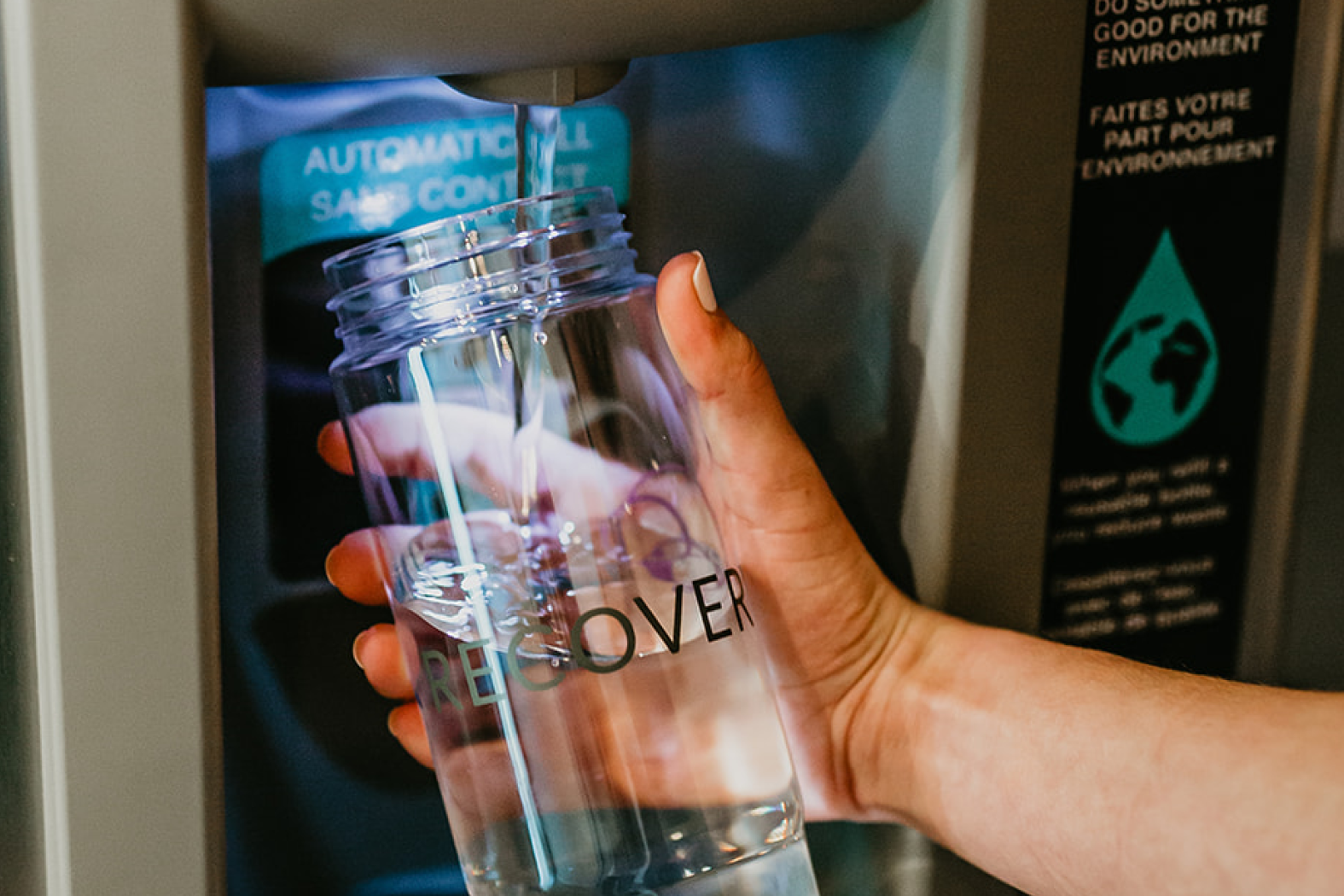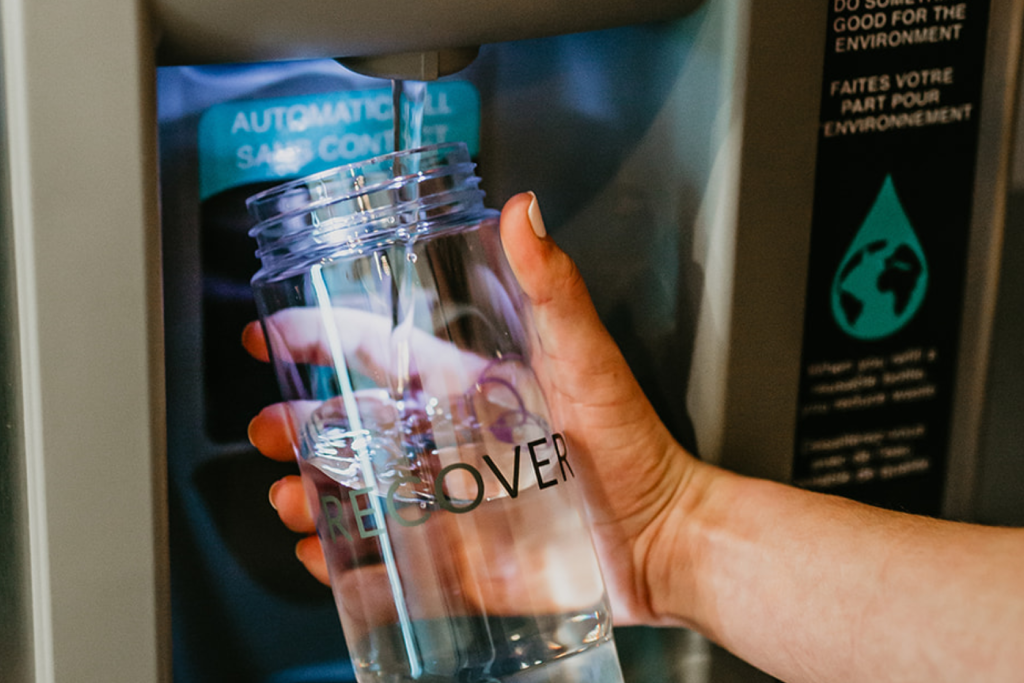Sometimes when we are doing everything we can to enhance athletic performance, we forget to do those simple things that are every bit as important as going to the gym and eating properly. Sport recovery modalities including sauna, normatech compression and cold immersion therapy all have a very important place, but first we need to make sure we are covering the basics. Sleep and hydration are both critical factors in sports performance and recovery. Everyone talks a good game when it comes to hydration but are they actually practicing it.
Our bodies are 75% water. Our muscle and nerve function, our metabolism, our circulation, our organs and our lymphatic system all require an optimum balance of water and salt to perform best. When we exercise, and especially when we exercise in the heat, we face a constant removal of fluids and salts from our systems. While we can typically handle short term deficits of water and salt, athletic performance beyond 30 minutes begin to tax our fluid and salt balance, thereby reducing our physical effectiveness. When the deficits become too large it becomes impossible to recover them as the activity continues, and these deficits also hamper our ability to recover. Dehydration also compromises blood flow to the skin and our muscles which are critical factors in cooling your body. The compromise in blood flow also directly affects the performance of our muscles and their elasticity and pliability. (1)
How do you know when you are dehydrated and what are some signs? Extreme thirst, headaches, dark colored urine and muscle cramps are all signs of more severe levels of dehydration. Often the first sign can simply be reduced energy or thirst. Most times, early dehydration has absolutely no tell-tale or visible signs. Because of this, you may not realize you are becoming dehydrated and when you finally do realize, it’s probably too late. (1)
So what is a proper approach to maintaining hydration: There are 3 simple keys:
1. Maintenance of proper daily hydration, whether you are exercising or not. You should be starting your proper hydration for the day no later than 9 am and this should continue until at least 2 hours before bed.
2. The second key is proper replenishment during exercise.
3. Don’t forget about salt.
So how much water should we consume for maintenance?
As a general rule of thumb, we should take in ½ of our body weight in fluid ounces per day. That means if you weigh 160 pounds, you should take in 80 fluid ounces a day. “Ounces are old school”, so how much is 80 fluid ounces. The conversion is simple, 8 fluid ounces is the same as 250 ml. Therefore 80 fluid ounces is 10 X 250 ml or 2.5 L. (1)
Now, what about replenishment during exercise. Determining how much water we need during exercise is actually very simple but it requires some effort to figure it out. The beauty is the effort to figure it out is minimal. All you have to do is weigh yourself before a very typical one hour workout and then weigh yourself right after the workout making sure not to have any intake during the workout. You also have to avoid a trip to the bathroom during the workout and prior to the weigh-out. (One thing to remember is the conditions that we are exercising in. If you measured your water loss after a workout in the winter, you may want to repeat that same duration of exercise in the warmer months when we are likely to lose more water during the same duration of exercise) If you weigh 160 pounds prior to the workout and 158 pounds after the workout, then its pretty simple, all the weight you lost is water. That means you lost 2 pounds of water during the exercise. How much is 2 pounds, well it’s not exact, but that is approximately 1 L of water. Basically, every pound of water is close to 500 ml of water. “Well, what about the calories I burned. That must account for some of the weight?” I’m afraid not. Those pounds will be lost later in the day or over a number of successive days with proper eating. During exercise, all you lost for weight during the workout was water. For a more in depth assessment of sweat rates, check out a great article at precisionhydration.com (2)
What about salt?
Salt is vital to our bodily function, our health and our athletic performance. Recovering and replacing salt needs to be a priority just like water replacement is a priority. “So, how on earth do I know how much salt I lose during exercise?” This is a topic that requires significant discussion. There are all sorts of methods for determining and estimating salt loss. Certainly some people are “saltier’ sweaters than others. Because this is a complex topic, our next blog will focus specifically on salt and determining what each individual needs. As a start, the easiest thing to remember is that a good average number is for every 1 L of water we lose during exercise, we should probably replace that 1 L of water and 800-1000 mg of Salt. And what kind of salt do we need to replace? The salt we need is NaCl. If you look at any drink label, the mg of NaCl or “Sodium” is typically on the bottle.
Where do we get NaCl/Sodium/Salt supplements? They can be as easy as a NaCl or Sodium salt pill from a pharmacy or a health food store. That’s the quickest, easiest and cheapest answer. The problem is, it can also taste like drinking from the ocean. There are lots of other salt replacement products out there. Find one you like in terms of a taste that sits well with you. Also, be sure you read the label to make sure you aren’t getting something with sugar and calories. If you prefer a sport drink, choose one without sugar and take a look at how much salt you are getting. Sports drinks often overdeliver on sugar and calories and undelivered on what they are really supposed to be providing, which is salt. At Recovery Lab, we’ve chosen to carry a product called LMNT.(3) We think it is a great product. It has 1000 mg of Sodium which is exactly what we want in 1 L of water. It also provides Potassium and Magnesium which are both essential salts and it has no calories as it uses Stevia as its artificial sweetener. It also tastes great and is a real thirst quencher following exercise.
So for now, remember, drink water for maintenance throughout the day. Do a sweat test and determine how much water you need to replace during or immediately after exercise. And finally, we need salt. Leave it to your diet to provide you with the salt you need in your everyday living but when you exercise, supplement your salt to make sure you are getting enough when you really need it.
So how do I actually get in the habit of hydration:
1. Use a reusable water bottle that is always on hand. You should never walk out the door for work, a drive or an activity without your bottle in your hand. There are lots of options, choose one that speaks to you.
2. Boost the flavour with a non-caloric sweetener. Lemon or lime slices work well too.
3. When you pack your gym clothes, don’t forget to throw in your salt supplement and throw it in your water bottle for your workout.
4. Take your time getting there. If you don’t usually drink water, work up to it over a couple of weeks. If you never drink water and then one day decide to drink 2.5 L of it, it may seem like a lot. If you gradually increase it and keep doing it, it becomes a very easy habit.
5. Coffee, caffeinated tea and alcohol including beer don’t count. Each of these beverages act as a diuretic and we end up getting rid of the water as urine
Stay Hydrated!



